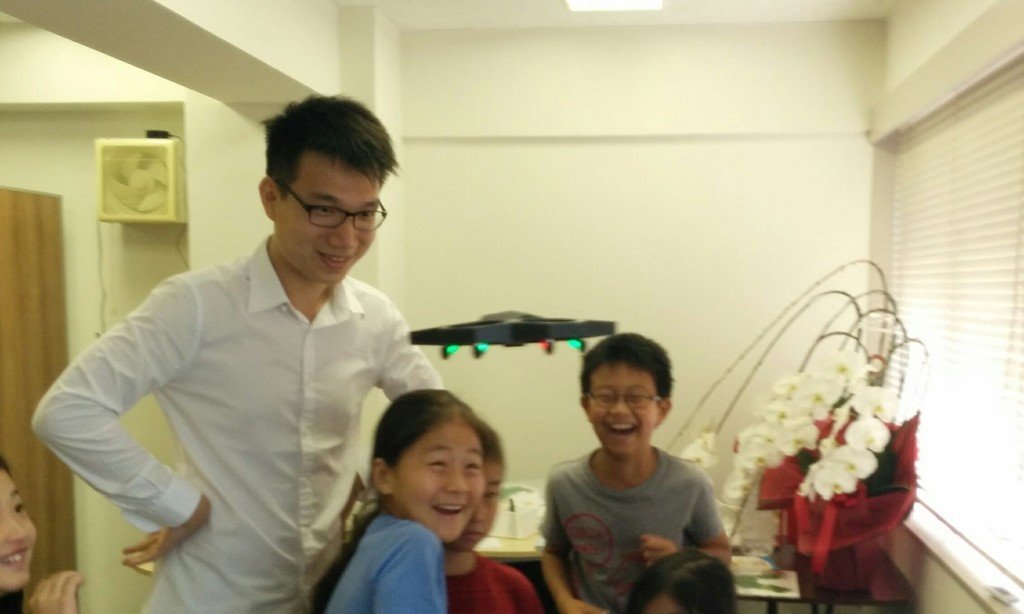Japan or Singapore? Kids will be kids
Coding Lab Japan Campus (Tokyo, Japan)
We sent our intern to Japan to teach over the summer holidays. He shares his 4 key takeaways on how children learn.Monday, 1400H: The plane touched down at Haneda airport. It was my second time in Tokyo, but it certainly felt different from my first. As I breathed in the cool air and looked around me, I felt a sense of excitement as to what would await me the next day, when I would first step into the Coding Lab Japan campus and have my first interaction with the students and teaching team.Tuesday, 0800H: Finally! After a quick ride on the efficient subway, I was about to take my first step into the Coding Lab campus - easily identifiable with the Signature Coding Lab emblem visible on the glass door. My time in Coding Lab Japan was about to begin. I stepped through the glass doors, and here’s what I learnt:
Entertain their curiosities
In Japan, I had a very young student who was very nervous and afraid in class. But I soon found out that she loved to play the piano. She was fascinated when I introduced the different musical instruments in Scratch, and we had great fun creating music related projects together. I realised just how important it was to pay attention to the children’s curiosities and interests, as that would be what gives them their intrinsic motivation to learn. We need to ensure that we discover the topic that the child is interested in, and engage them by combining it with programming concepts to build a fun project.Moral of the story:Children will be curious, no matter which country they are from. They are always fascinated about how things work, and more often than not, there will be a mischievous student in class figuring out how to take it apart. Taking note of what they are curious about is a good way to find out more about the child’s interests, and these are going to be your best allies in grabbing and holding that child’s attention.
Understand how they Learn
Students in Japan learning how to code using Scratch
Although many of the students in Japan do not take English as their first language, communication was no issue as I was able to help them understand key concepts by switching between different methods of teaching. I alternated between drawing it out, to using real-life examples (acting it out sometimes!), and most importantly, encouraging them to try it out by themselves. The satisfaction when they finally got it and were able to write their lines of code brought a huge smile to my face.Moral of the story:Children learn and develop at different rates. It is important to understand how they learn, and adjust our teaching methods accordingly. The process of figuring out the child’s learning style will require time, observations, and trial and error. At the end of the day, it is completely worth it, just to make a difference in the child’s life.
Explore through Play
Learning to fly and code the Airblock drone
Whether in Japan or Singapore, students are always excited about playing with their own games after they have created them. They often get absorbed in experimenting with their projects, oftentimes changing a value here and there which makes a huge difference to the difficulty and gameplay of their games. Encouraging students to experiment with the games they have learnt to create reinforces what they have learnt and also helps to build confidence in their own abilities. Sometimes the results of their experiments can surprise you! A student in Japan was playing with one of the tech toys at Coding Lab - an Airblock drone - during his break time and he could program the drone without much help even though he has not done it before, as it was similar to what he had learnt in Scratch. Moral of the story:Children love to play! Play is one of the main ways in which children learn. Give the children some time to play and experiment on their own; you’ll be surprised by their concentration, and what they can achieve.
Challenge them at the Right Level
Nikko, Japan - The beautiful Shinkyo Bridge, a UNESCO World Heritage site (One of my favourite places in Tokyo)
Whenever any of the students got stuck writing their code, I would ask them to take a quick break if they needed to, and challenge them to solve the problem when they return. More often than not, they quickly got into solving the problem, as solving a challenge given by a teacher gives them a great sense of accomplishment. However, it is important to take note of the abilities of the children, and challenge them at the right level. Giving them a challenge that is not within their capabilities will discourage them, doing more harm than good. It is important to observe the capabilities of the children, and create challenges that are slightly outside of their comfort zone. In the Coding Lab curriculum, there are many different problems and challenges available, designed for different levels of abilities to bring out the best in your child.Moral of the story:Challenges and competitions are a great (and fun) way to get the children involved and motivated. This way, you can push the child to achieve more, and build their confidence. Wednesday, 1630: As I boarded the flight back to Singapore, I couldn’t help but review the memories of my experience in Japan. All in all, it was amazing and I really enjoyed the chance to make an impact in the students’ lives during my time in Coding Lab Japan. On top of that, I experienced the wonderful culture of Japan and visited many beautiful places. I have truly learned a lot from the teams in both Japan and Singapore and the experience has been invaluable.




